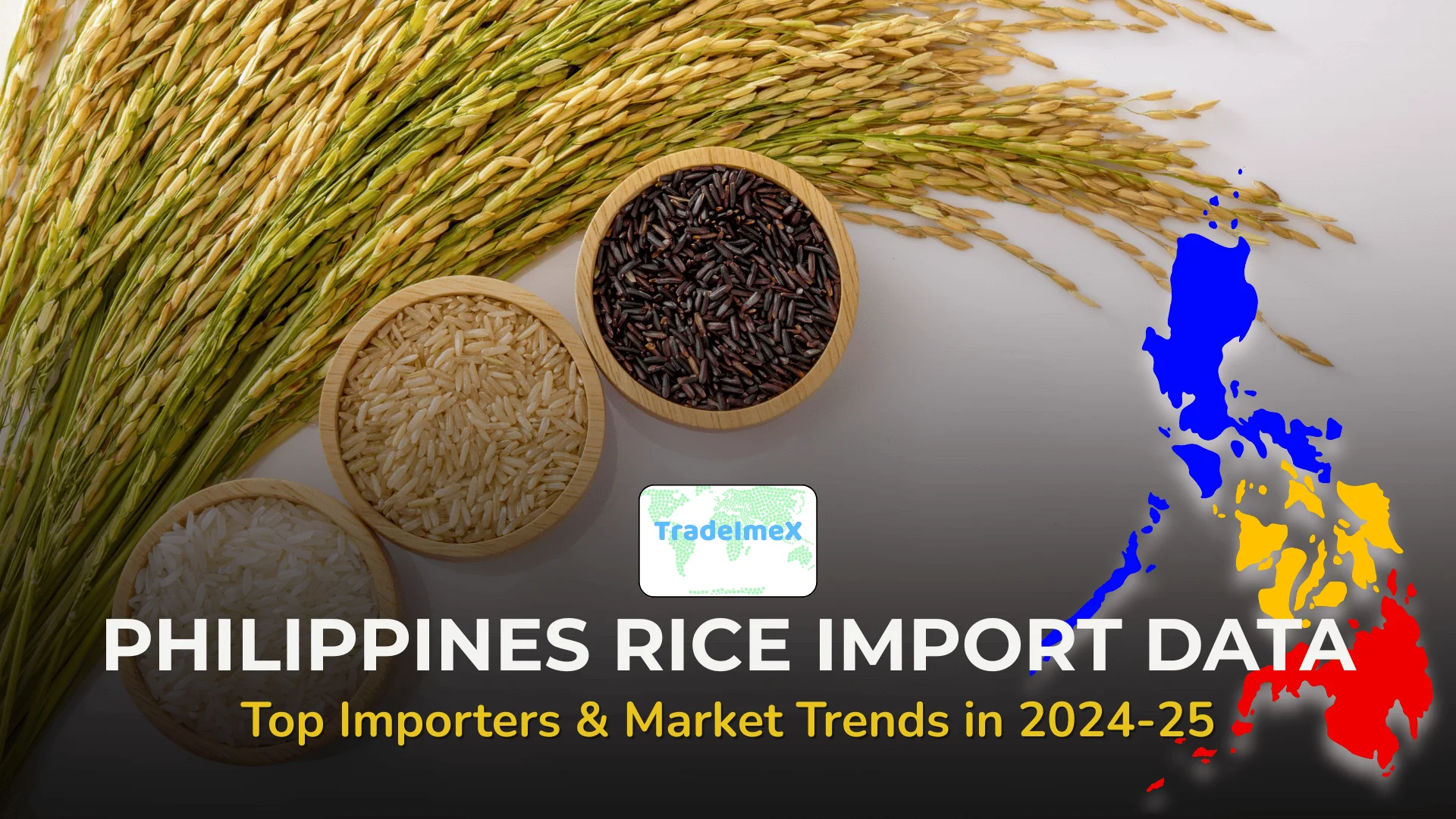
The Philippines remains one of the top global importers of rice due to its continued efforts to stabilize domestic supply and ensure food security for its growing population. Despite investments in agricultural development, the nation consistently relies on rice imports to meet consumption needs. In this blog, we’ll dive deep into the latest Philippines rice imports, identify top rice importers, and analyze key market trends for 2024–25.
📦 Philippines Rice Import Overview – 2024
In 2024, rice remains a strategic food commodity in the Philippines. According to the latest Philippines rice import data, the country imported around 3.8 to 4.2 million metric tons of rice in 2023–24. This volume is expected to stay consistent or even slightly increase in 2024–25 due to climatic factors and steady consumption rates.
🔍 Key Highlights:
-
Annual Import Volume (FY 2023–24): ~4 million metric tons
-
Estimated Import Value: USD 1.7 to 2.0 billion
-
Per Capita Rice Consumption: 110–120 kg/year
-
Import Dependency Rate: 15%–18% of total domestic rice needs
The increase in rice imports is primarily driven by limited arable land, weather disruptions, high farming costs, and growing demand due to population growth.
🌍 Top Exporting Countries to the Philippines
The Philippines imports rice mainly from Southeast Asian countries, taking advantage of tariff reductions through regional trade agreements.
| Exporting Country | Share in Total Imports (%) |
|---|---|
| Vietnam | 45% |
| Thailand | 25% |
| India | 15% |
| Myanmar | 8% |
| Pakistan & China | 7% (combined) |
✅ Vietnam continues to be the leading exporter of rice to the Philippines due to long-term bilateral agreements and competitive pricing.
🏢 Top Rice Importers in the Philippines (2024–25)
Private traders and corporations are now the primary players in the import market, especially after the Rice Tariffication Law of 2019, which liberalized rice imports.
Here are the top rice-importing companies based on TradeImeX Philippines import data:
-
Puregold Rice Distributors
-
Vinafood International Philippines Inc.
-
Philippine International Trading Corporation (PITC)
-
SL Agritech Corporation
-
Universal Harvester Inc.
These importers source rice mainly from Vietnam, Thailand, and India, and supply large retail chains, wholesalers, and government reserves.
📈 Key Trends in the Philippines Rice Import Market (2024–25)
1. Liberalized Trade Policy
With the implementation of the Rice Tariffication Law, import quotas were abolished. Private importers are now free to bring in rice, subject to:
-
35% tariff for ASEAN rice
-
50% tariff for non-ASEAN rice
-
Compliance with Bureau of Plant Industry (BPI) permits
-
Phytosanitary and food safety certifications
This policy aims to lower rice prices for consumers but has also raised concerns from local farmers.
2. Climate-Related Import Demand
The Philippines is highly vulnerable to El Niño and typhoons, which damage rice fields and reduce yields. In 2024, extreme heat and erratic rainfall have already impacted the harvest season. As a result, the government and private sector are expected to increase rice imports in Q3 and Q4 of 2024 to stabilize the market.
3. India’s Export Restrictions
In 2023, India imposed a ban on non-basmati rice exports to manage domestic inflation. Though the ban was partially lifted in 2024, it disrupted global supply chains and pushed up prices. This affected Philippine imports and prompted the country to diversify its rice suppliers beyond India.
4. Digital Import Monitoring System
The Philippine government has rolled out digital import tracking systems to enhance transparency. Importers must now submit online documentation to the Department of Agriculture and the Bureau of Customs, reducing the risk of smuggling and illegal underpricing.
5. Local Farmer Impact and Subsidy Plans
While imports ensure food availability, local rice farmers face declining income due to cheaper foreign rice flooding the market. In response, the government is implementing subsidy programs and support measures such as:
-
Cash assistance from the Rice Competitiveness Enhancement Fund (RCEF)
-
Distribution of certified seeds and fertilizers
-
Post-harvest machinery grants
🚢 Philippines Rice Import Process – Step-by-Step
-
Importer Accreditation via the Bureau of Plant Industry (BPI)
-
Import Permit Application
-
Tariff and Customs Clearance at ports
-
Phytosanitary Inspection and food safety testing
-
Distribution to Retailers, Wholesalers, and NFA Warehouses
📌 Note: Only registered importers with proper documentation can legally import rice into the country.
📊 Forecast for Philippines Rice Imports – 2025
Looking ahead, rice import volumes are expected to remain between 3.5–4.5 million metric tons for FY 2025. TradeImeX predicts continued demand for imported rice due to:
-
Climate threats to local production
-
Stable domestic consumption
-
Price competitiveness of ASEAN rice
-
Increased buffer stocking by the NFA
The government is also eyeing bilateral rice deals with Pakistan, Cambodia, and Brazil to diversify sources and reduce geopolitical risk.
📚 How TradeImeX Helps You Track Rice Imports
At TradeImeX, we provide access to accurate and real-time Philippines rice import data. Our platform helps you:
-
Identify top importers and suppliers
-
Track monthly and yearly import volumes
-
Analyze origin country trends
-
Review product-wise import values
-
Monitor tariff changes and customs records
Whether you’re a rice exporter, importer, logistics firm, or market analyst, our trade database gives you a competitive edge in the global rice market.
✅ Conclusion
As rice continues to be the staple grain of the Philippines, the country’s reliance on imports will remain critical in 2024–25. With shifting trade policies, weather volatility, and rising demand, stakeholders must closely monitor import volumes, prices, and market shifts. Leveraging tools like TradeImeX import-export data can provide vital insights for smarter, data-driven decisions.